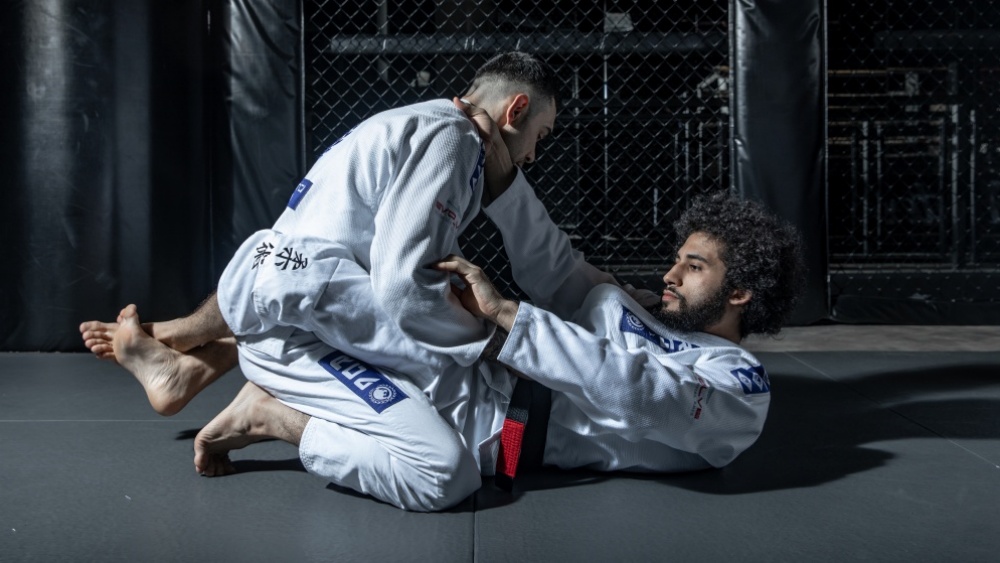Working from the guard position is one of the most fundamental skills you must master in Brazilian Jiu-Jitsu. BJJ is a martial art that heavily emphasizes utilizing the guard for offensive and defensive purposes. The closed guard is a classic and, in many ways, an essential guard position with many defensive properties. However, you can also execute many high-percentage attacks from this guard. Today, we will go over some of the best attacks that you can do from the closed guard.
Benefits Of Using The Closed Guard
The closed guard is perhaps the first guard you will learn in your BJJ journey. It is a guard where you use your legs as a noose – you wrap your legs around the opponent to limit their chances of escape. It is one of the toughest guards to crack, especially when the legs are fully locked.
In our opinion, learning the closed guard is a must because of its effectiveness in almost all forms of grappling; including Gi, No-Gi, mixed martial arts, and even self-defense situations. As mentioned earlier, the closed guard is one of the first guards you’ll likely learn as it is extremely easy to apply compared to other guards. This does not mean that it is only meant for beginners, though; the closed guard is a required technique that will take years of consistent practice to master. It is, therefore, critical to know several techniques once you enter the position. Now that we understand the benefits of the closed guard, let’s review our top recommendations.
The triangle choke is an iconic submission in not just BJJ but in grappling as a whole. It is a move known for its versatility and effectiveness from the closed guard. At its essence, the triangle choke means entangling the opponent’s head and arm within a triangular configuration formed by your legs. By adeptly controlling the opponent’s posture and angling their hips, you can apply tremendous pressure to the carotid arteries, inducing unconsciousness or forcing a submission.
The setup for the triangle choke demands careful attention to detail and opportunistic timing. Grapplers typically initiate the attack by breaking their opponent’s posture, securing grips on their arm and head, and tactically working to create the necessary angle for cinching the choke. From this advantageous position, you can then adjust the leverage and pressure to tighten the choke, compelling opponents to tap out or risk going to sleep.
2) Armbar
As one of the pillars of submission grappling, the armbar is a devastating technique that targets the opponent’s arm, specifically aiming to hyperextend the elbow joint for a swift and decisive victory. From the closed guard, you use your legs and hips to isolate the opponent’s arm, secure a firm grip on the wrist, and maneuver the limb across their body for optimal leverage.
Executing the armbar demands a fine understanding of joint manipulation and leverage. It is a good idea to strategically exploit openings in their opponent’s defense, baiting them into precarious positions before seamlessly transitioning into the armbar setup. With proper execution, you can capitalize on your opponent’s vulnerability, extending the arm to its breaking point and forcing submission.
3) Omoplata
The omoplata is a versatile shoulder lock submission that can be effectively used from the closed guard. This technique allows you to neutralize even the largest of opponents by using your legs to isolate their arms. This technique hinges on entangling the opponent’s arm between your legs, exerting pressure on the shoulder joint to finish the fight.
Initiating the omoplata requires good grip control and strategic positioning from the closed guard. The typical approach is to methodically secure grips on the opponent’s wrist and collar, disrupting their posture and balance to create openings for the omoplata. You can manipulate the opponent’s arm using your legs and hips, driving their shoulder into a compromised position and tapping them in the process.
4) Kimura Lock
Famous for its versatility and adaptability, the kimura submission is a formidable weapon from the closed guard, allowing you to impose your will and secure victory. This technique focuses on targeting the opponent’s shoulder joint, employing torque and leverage to exert controlled pressure and facilitate submission.
To execute the kimura from the closed guard, you must leverage your grip and positional awareness to isolate the opponent’s arm and start locking the Figure 4 configuration. After securing a firm grip on the opponent’s wrist, the next step is applying downward pressure while strategically controlling their posture to maximize leverage. The kimura can be seamlessly integrated into offensive sequences, enabling you to transition seamlessly between attacks and, in the process, maintain control over the opponent throughout your engagement.
The scissor sweep is an excellent option for newbies because it establishes reasonable control of your opponent’s posture. A typical scissor sweep starts from the closed guard, a guard known for relying on cross-collar and sleeve control. The inherent reliance on grips from this guard makes it easier for beginners to transition to an attack because you still have some form of control over your opponent.
To execute a scissor sweep, you must first open your guard, shift towards a hip, place a knee on your opponent’s torso, and block the other knee with your foot, all while maintaining control of your grips. Next, you need to off-balance your opponent (kuzushi) by pulling the body towards your head, thus making the body lighter. From here, you use your knee to dump the opponent towards one side while making a scissor motion with your legs. You should be able to go to the mount easily if you do it correctly.
Conclusion
These are our top recommendations for building a rock-solid closed-guard game. With a consistent dedication to training and a commitment to technical refinement, grapplers of all skills and experience can unlock the full potential of the closed guard, harnessing its power to overcome opponents and arise victorious in the heat of competition.
You may also like:

















